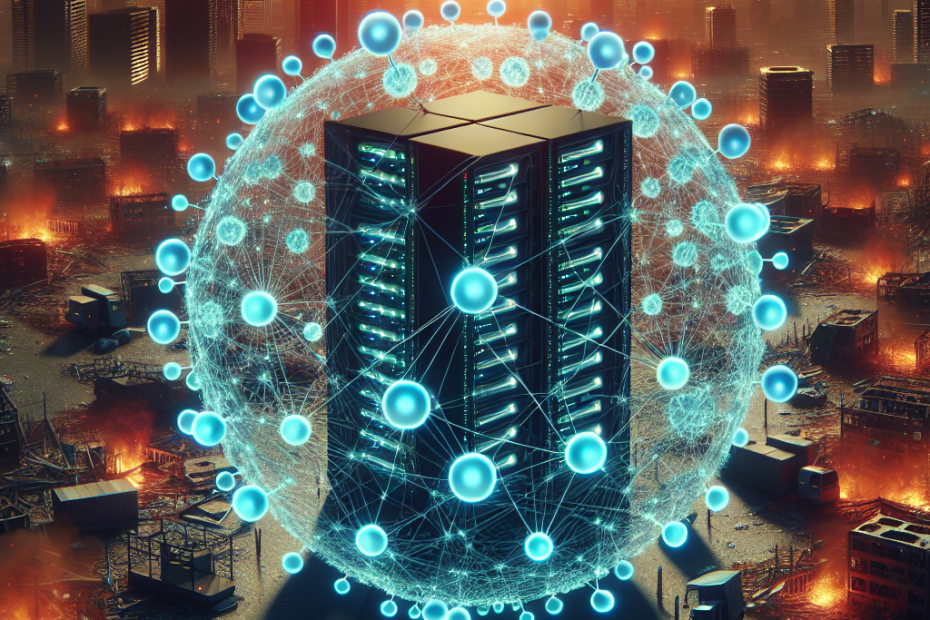In an era where disruptions can strike at lightning speed—from natural calamities to cyber-attacks—the need for robust disaster recovery plans is more pressing than ever. Enter edge computing: a transformative technology that’s redefining how businesses and societies prepare for unforeseen events. This blog post explores the critical role of edge computing in disaster recovery, resilience planning with edge technology, and future-proofing business continuity strategies.
Introduction
Imagine a world where businesses can bounce back from disasters almost instantaneously. Edge computing makes this vision possible by enhancing real-time data processing capabilities during crises, enabling faster decision-making when it matters most. This post delves into how edge computing serves as a linchpin in disaster recovery efforts, with insights from leading entities like IBM, Microsoft Azure, and the Smart Cities Council.
Understanding Edge Computing
What is Edge Computing?
Edge computing represents a paradigm shift: instead of sending data to centralized cloud servers for processing, it occurs closer to where data is generated. This approach offers numerous advantages, making operations more efficient by reducing latency, enhancing security, and boosting system performance during peak times.
Key Benefits:
- Reduced Latency: By processing data at local nodes, edge computing minimizes delays.
- Improved Security: Sensitive information stays closer to its source, bolstering protection.
- Scalability: Edge devices can be easily scaled according to demand.
Role of Edge Computing in Disaster Recovery
Enhancing Real-Time Data Processing
During disasters, swift action based on real-time data is crucial. The integration of edge computing enables local processing at edge nodes, reducing reliance on potentially vulnerable central servers and ensuring critical operations continue smoothly.
Quicker Response Times and Local Decision-Making
In crisis situations, time is of the essence. Edge devices empower organizations to make rapid, localized decisions without waiting for cloud-based insights—a crucial advantage when connectivity may be disrupted during a disaster.
Case Study: IBM’s Approach
IBM has been a pioneer in integrating edge computing into its resilience planning strategies. By leveraging their robust infrastructure, businesses gain access to enhanced real-time data processing and quicker recovery times in emergencies. IBM’s approach includes deploying edge analytics that allow for immediate insights and actions at the point of data collection.
Real-World Application:
In disaster-prone regions, IBM has deployed its edge solutions to monitor environmental data, such as seismic activity or weather patterns. By analyzing this data locally, organizations can predict potential disasters and take preemptive action, significantly reducing downtime and enhancing safety measures.
Resilience Planning with Edge Technology
Building Resilient Systems
Strategically deploying edge technology is key to creating resilient systems that withstand various disruptions. This involves implementing redundant systems, regular updates, and rigorous testing protocols.
Strategies for Resilience:
- Redundancy: Establish backup nodes across different geographical locations.
- Regular Updates: Keep software and hardware up-to-date to mitigate vulnerabilities.
- Testing Protocols: Conduct frequent disaster recovery drills to ensure preparedness.
The Role of Microsoft Azure
Microsoft Azure plays a pivotal role in future-proofing business continuity plans by providing tools that enable businesses to deploy scalable, secure, and efficient edge computing architectures adaptable during crises. With Azure’s suite of services, enterprises can design systems that not only recover quickly but also adapt dynamically as situations evolve.
Key Features of Microsoft Azure:
- Azure IoT Edge: Facilitates seamless data processing on devices at the network’s edge.
- Hybrid Connectivity: Allows for smooth integration between cloud and on-premises solutions.
- Scalability and Flexibility: Provides scalable resources to handle fluctuating demands during crises.
Expanding on Hybrid Models
The hybrid model, combining on-premises data centers with cloud and edge computing, offers unmatched flexibility. This setup ensures that even if the central cloud is inaccessible, critical operations can continue via local edge devices. The result is a resilient architecture capable of adapting to various disaster scenarios.
Future-Proofing Business Continuity Strategies
Edge computing isn’t just about immediate recovery; it’s also about preparing for the future. By integrating edge technology into their disaster recovery frameworks, organizations can build more resilient systems capable of withstanding tomorrow’s challenges.
How Smart City Initiatives Incorporate Edge Computing
Smart Cities Council advocates for smart city solutions that utilize edge technology to enhance resource management and expedite post-disaster recovery in urban environments. This approach bolsters municipal resilience by leveraging the integration of edge computing to manage real-time data during disasters efficiently.
Benefits to Urban Planning:
- Traffic Management: Real-time data processing at intersections helps reroute traffic swiftly during emergencies.
- Public Safety Systems: Enhanced surveillance and quicker response times improve overall safety.
- Infrastructure Monitoring: Continuous monitoring of critical infrastructure ensures timely maintenance and disaster preparedness.
Examples from Smart Cities
In cities like Singapore and Barcelona, edge computing is being used to create smarter urban ecosystems. These cities utilize sensors and IoT devices deployed across the cityscape to monitor everything from air quality to energy consumption, providing valuable data that can be processed on-site to inform immediate actions during crises.
Conclusion
The integration of edge computing into disaster recovery strategies marks a significant advancement in how organizations prepare for and respond to emergencies. By leveraging local processing capabilities, reducing latency, and enhancing security, businesses and cities are better equipped to handle disruptions swiftly and efficiently. As technology continues to evolve, the role of edge computing in building resilient systems will only grow more critical.
In summary, edge computing stands at the forefront of modern disaster recovery strategies. It offers a robust framework for real-time data processing, rapid decision-making, and enhanced system resilience—key components that are essential for navigating today’s unpredictable landscape. With contributions from leading tech companies like IBM and Microsoft Azure, and innovative applications in smart cities, the future of disaster recovery looks promisingly secure and efficient. As we move forward, embracing edge computing will be vital for organizations aiming to safeguard their operations against potential disasters.
